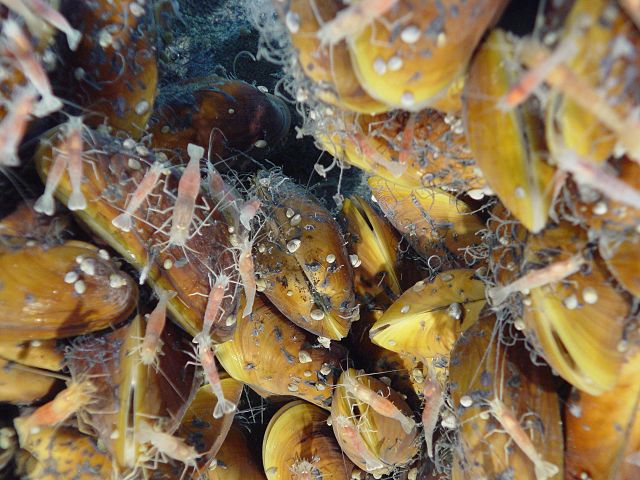A herbivore is an animal anatomically and physiologically adapted to eating plant material, for example foliage or marine algae, for the main component of its diet. As a result of their plant diet, herbivorous animals typically have mouthparts adapted to rasping or grinding. Horses and other herbivores have wide flat teeth that are adapted to grinding grass, tree bark, and other tough plant material.
A deer and two fawns feeding on foliage
A sawfly larva feeding on a leaf
Tracks made by terrestrial gastropods with their radulas, scraping green algae from a surface inside a greenhouse
A fossil Viburnum lesquereuxii leaf with evidence of insect herbivory; Dakota Sandstone (Cretaceous) of Ellsworth County, Kansas. Scale bar is 10 mm.
Animals are multicellular, eukaryotic organisms in the biological kingdom Animalia, With few exceptions, animals consume organic material, breathe oxygen, have myocytes and are able to move, can reproduce sexually, and grow from a hollow sphere of cells, the blastula, during embryonic development. Animals form a clade, meaning that they arose from a single common ancestor.
Sexual reproduction is nearly universal in animals, such as these dragonflies.
Predators, such as this ultramarine flycatcher (Ficedula superciliaris), feed on other animals.
Hydrothermal vent mussels and shrimps
The blue whale is the largest animal that has ever lived.








